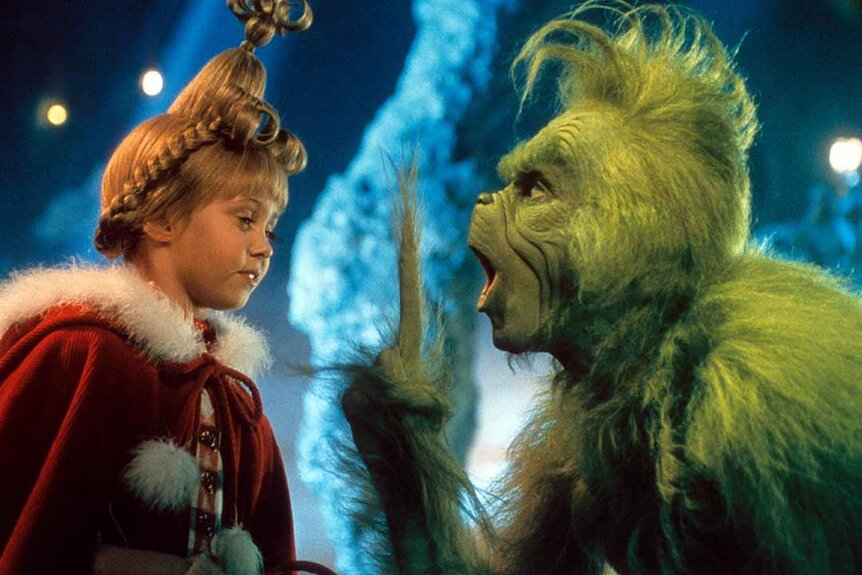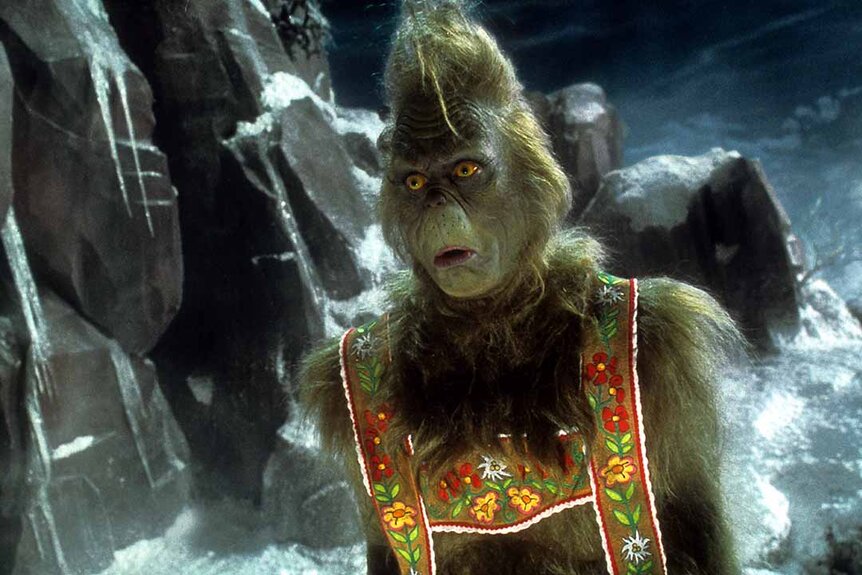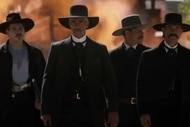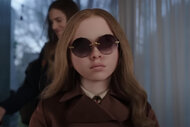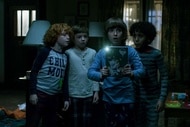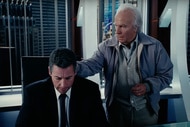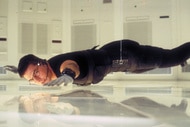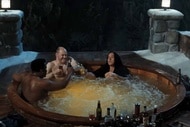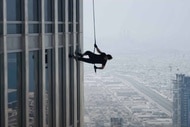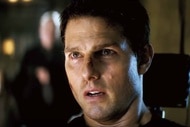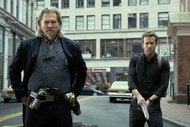Create a free profile to get unlimited access to exclusive videos, sweepstakes, and more!
How Citizen Kane Inspired the Look of Ron Howard's How the Grinch Stole Christmas
Production designer Michael Corenblith discusses the sets he built for the festive Dr. Seuss adaptation.

When Michael Corenblith was asked to help bring the world of Dr. Seuss into the realm of live action for the very first time via Ron Howard's adaptation of How the Grinch Stole Christmas! (now streaming on Peacock), the production designer began his research in the logical place: the children's section of a large bookstore.
"[I laid] out the entire Dr. Seuss catalogue in the order of their publication to see what could be learned from a wider overview," he tells SYFY WIRE over email. "One of the first things I discovered was that Dr. Seuss’ illustrating of environments began in a very straightforward way, developed into something a little less detailed, then ended up as almost pure abstraction. But during this evolution, he maintained a preference for a certain set of shapes that began in nature and architecture. Seuss had obvious affinity for the work of the Spanish architect Antonio Gaudi, and was also enamored of Islamic and Moroccan building forms."
RELATED: A Brief History of The Grinch, from Picture Books to Blockbusters
The resultant sets would take up three of the biggest soundstages on the Universal lot and nab Corenblith an Oscar nomination for Best Art Direction.
How the Grinch Stole Christmas production designer on building Whoville
Hoping to avoid the expected look of a traditional "Santa's Village" that one associates with the holiday season, Corenblith pitched the film's depiction of Whoville as "a tactile and physical world inspired by the same architecture and natural forms that had inspired Seuss, imagined as a European town that had existed for centuries and encompassed a rich history of eras and styles," he explains. "This enabled each major building to have its own origin-antecedent and character."
The town hall, for instance, was built in the style of "Greek Revival with Seuss animals guarding the entrance, reminiscent of the lions on the steps of the New York Public Library." Farfingle’s Department Store, on the other hand, adopted the "Art Nouveau fashion of an old Parisian storefront." Further still, the Grinch's adoptive mothers — Clarnella Who (Mindy Sterling) and Rose Who (Rachel Winfree) — were given "a New Orleans French Quarter-style apartment."
For the macro look of Whoville we get at the very start of the movie, Corenblith found himself leaning more on Horton Hears a Who! (published in 1954, three years before Grinch) as reference. "In his move toward abstraction, Whoville was little more than a few haystack houses [in How the Grinch Stole Christmas!]," the production designer says, "but when illustrating Horton, Seuss gave the buildings and the Whos far more specificity, including their remarkable sense of balance and comfort with great heights."
RELATED: From the Grinch to Shrek: The best animated holiday specials, ranked
He continues: "One of the best moments of designing the film came when looking at the layouts of the plaster buildings and realizing that I could connect them with skybridges that spanned the main street, thus filling the frame in a way that I’d been seeking. It was a simple matter of taking scissors to poster board and creating these for the model. To actually create and film these staircases required the structural engineering talents of a technician from the Jet Propulsion Laboratory and a troupe of acrobats specifically trained to perform at these heights without railings, which the Seuss shape and silhouette didn’t permit."
How Citizen Kane helped inspire the Grinch's lair
While conceiving the Mount Crumpit lair occupied by the Christmas-hating recluse (played to absolute perfection by a nearly-unrecognizable Jim Carrey), Corenblith drew on his love of Orson Welles' Citizen Kane, "of a dejected Kane being alone in the grand interiors of Xanadu, a small and lonely presence in a big room," he reveals. "In addition to the scale, I loved the emotional tone that the exalted black and white cinematography of [Citizen Kane DP] Gregg Toland brought to those scenes and proposed that unlike the optimistically polychromatic world of the Whos, the palette for the Grinch’s Lair would be both simple and dark."
RELATED: 5 Things to Know About How The Grinch Stole Christmas
He continues: "I wanted the lair to have a cathedral-like volume with a grand room and also wanted for it to be entered and revealed by placing the ‘front door’ on the second floor. But we also needed a way to get the actors and camera between these two stage levels and, in keeping with the Seuss vocabulary of shapes, designed a long spiral ramp connecting the two floors. This 'Guggenheim Museum turned upside-down' gave our kinetic lead actor plenty of room to improvise and [in] Cindy-Lou’s first visit to the lair uses these capabilities to the fullest."
Director of photography Don Peterman completed the grand effect by shining "high-powered Xenon lights" through a dozen holes in the upper cave ceiling," Corenblith notes. "[The] beams gave us the cathedral feel we envisioned. He also placed small mirrors on the floor to bounce light onto the walls in unusual ways."
That time Dr. Seuss' widow was baffled by the Grinch set
When it was time for Dr. Seuss' widow, Audrey Geisel, to tour of the set, she was accompanied by representatives of Random House and Universal executives. Everyone was on pins and needles, hoping to land the approval of the woman who commanded the entire Seuss estate, when she requested a private word with Corenblith "behind the set."
"There were some worried looks among those gathered, but when she and I were alone, she said that she was embarrassed [and] couldn’t remember which of Ted’s books the town hall was from," he says of the encounter. "Then, after a moment, [she] realized, ‘I don’t know which of Ted’s books, any of these buildings are from.’ By virtue of employing the shapes and palettes that Seuss created, we were able to briefly persuade his widow that Whoville had come from his hand, which, in many ways, it did."
And what happened then...? Well, in Whoville they say, that Michael Corenblith's blood pressure grew three sizes that day.
How the Grinch Stole Christmas is now streaming on Peacock.


